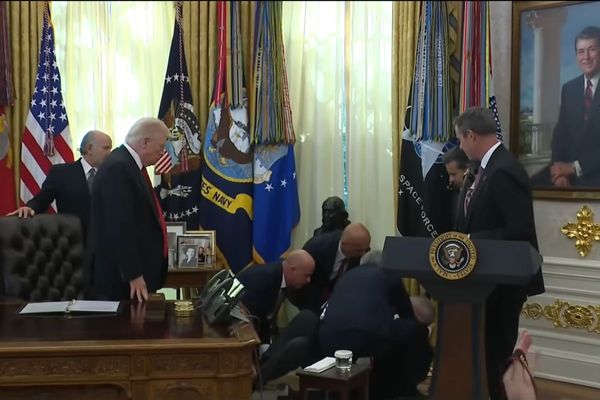
Working long hours at a poorly ventilated tyre repair shop in Delhi’s Shahdara, each breath feels like a battle for 13-year-old Rajesh. But he must go on. Because he has to support his family’s rising expenses, including the Rs 1,000 spent every month on his tuberculosis treatment.
Rajesh is the eldest son of Sonia, a single mother of three who is struggling to feed the family while working as a cook. “Sometimes, it’s hard to even get half of his medicines because we just don’t have the money.”
While the capital’s air quality has made global headlines, air pollution has been a silent killer across India. According to the State of Global Air 2024 report, toxic air contributes to nearly 464 deaths of children aged under five each day across the country. And in the capital, where the air quality has now shifted to the very poor category, one in three schoolchildren suffers from asthma or airflow obstruction, according to a 2021 study by the Lung Care Foundation and Pulmocare Research and Education (PURE) Foundation.
The National Commission for Protection of Child Rights had reportedly sought data from doctors in the capital on children suffering from respiratory problems. At a meeting last month, it said it will establish guidelines for attending to children suffering from respiratory diseases based on this data.
In three government hospitals Newslaundry visited last month amid a severe AQI, many parents had queued up to get treatment for their children suffering from respiratory ailments.
‘It gets harder for him to breathe every year’
In the crowded paediatric department of Lal Bahadur Shastri Hospital, Mohini, a sweeper in a private school, sat with her eight-year-old son Arjun on her lap. Arjun has been asthmatic for the last two years, and Mohini said “it gets harder for him to breathe every year, especially in November and December…there’s no space to play in the house, and all their friends play outside, so they want to join them.”
Having tried home remedies, Mohini, a resident of Sangam Vihar, was at the hospital to meet a doctor and get subsidised asthma inhalers.
Some had travelled a long distance to be at the hospital, like Nidhi, a wastepicker from Bhalswa, who spent two hours to reach the health facility’s noisy corridor with her four-year-old daughter Meera. Nidhi said she takes her daughter along when she steps out to pick waste each morning and it has taken a toll on her health.
“We don’t have a lot of resources, and that’s one of the reasons why our children suffer…someone from the neighbourhood told me this doctor here could help with her coughing and shortness of breath…it’s not just the pollution. It’s the dust we inhale while working, picking waste…that’s what affects us the most. We breathe it all day.”
Dr Amit Sharma, head of the ENT department at SHALBY Sanar International Hospitals in Gurugram, reportedly said there has been a noticeable rise in the use of nebulisers among “Over the past two years, from 2022 to 2024, the need for nebulisation in children has increased by 12 to 15 percent.”
A survey by ‘Warrior Moms’ – a network of mothers – and local chemists also found a sharp rise in demand for nebulisers and inhalers during peak air pollution in Delhi-NCR. Over a third of buyers were parents of children, with North Delhi seeing about 17 nebulisers bought daily. Sales of Asthalin and Levolin inhalers surged by 40 percent while south and central Delhi recorded around 10 daily purchases each.
Rise in patients
Dr Ankit Singhal, director at Neo Clinic and senior consultant in respiratory medicine at Sri Balaji Action Medical Institute, said that 30 to 40 percent of children breathing in Delhi’s polluted air will likely develop asthma in the years to come.
According to a 2019 study in the International Journal of Environmental Health Research, epidemiological studies “indicate increased risk for cardiovascular diseases, lung cancer and respiratory diseases (bronchitis and respiratory tract infections) in urban residents compared to a rural population”.
Meanwhile, at the Aruna Asif Ali Hospital, a paediatrician told Newslaundry in November that she was diagnosing as many 15 children each day as compared to the two or three patients that would walk in weeks ago. “Their lungs are still growing, and exposure to air pollution can stunt that growth.”
Dr Singhal reaffirmed this trend. “A lot more children are coming in with respiratory issues.”
At the hospital, many parents cradled their sick children in their arms, most without masks. Dolan, a domestic staffer from East Vinod Nagar, helplessly watched her seven-year-old daughter Tanishika cough in her lap, waiting for her turn to see the doctor.
“See, this is how bad her condition is…this is the third time I’ve brought her here in the last 10 days…the doctors haven’t said she has asthma, but I don’t know what else it could be…one of my employers gives me extra money for Tanishika’s treatment, but that’s not always the case.”
Dolan, a mother of two, said her two children spend time in their one-room home while she goes to work with her husband. “There’s just a small gate, no windows, so they end up playing outside.”
‘No space indoors’
Not far away, at Chacha Nehru Bal Chikitsalaya in Geeta Colony, Daman, an autodriver, walks with his nine-year-old son Kabir, his eyes bloodshot, his forearms covered in rashes, and his body running a high fever. Daman said he initially thought it was a flu, “but when the itching and redness didn’t go away, I decided to rush him to the hospital.”
The doctor prescribed medication for a mild respiratory infection. “Air pollution is eating up years of my son’s life,” said Daman, who is from Bihar and lives in a JJ cluster nearby. “Since the schools closed, they’ve been playing outside more. There’s no space to keep them indoors,” said another woman who came to the hospital for her child’s treatment.
In November, the Supreme Court had ordered the closure of schools in NCR as the city entered the emergency phase of pollution control under GRAP IV – it was relaxed earlier in December. For many families, this was only a temporary reprieve from the toxic air their children breathe every day.
Khushi, a four-year-old, sat with her father Brijesh, a factory worker from a JJ cluster in Geeta Colony. She sneezed non-stop, especially in the mornings, and the constant irritation made her restless.
“We thought it was just a common cold at first…but after three days, when she wasn’t getting better, I knew something more was wrong…the doctor says she has allergies maybe because of the dust and pollution. He has given medicines,” said Brijesh.
A recent report by the Chintan Environmental Research and Action Group found that 89 percent of schoolchildren in Delhi-NCR are deeply concerned about climate change. The report had surveyed 423 students aged 10 to 15 from various socio-economic backgrounds.
According to Sagnik Dey, Professor at the Centre for Atmospheric Sciences, IIT Delhi, and Adjunct Professor at Korea University in Seoul, children from disadvantaged backgrounds are especially vulnerable to the harmful effects of air pollution. He said children living in poverty, with limited access to education and poor nutrition, and those exposed to solid cooking fuels, are at a higher risk. “These children are exposed to higher levels of PM2.5, which directly impacts their health,” said Dey, pointing out that the impact of air pollution on a child’s health begins even before birth and continues throughout their early years.
Dey said numerous studies have linked air pollution to a range of serious health issues, including stunting, wasting, underweight, childhood anaemia, asthma, pneumonia, impaired lung development, acute respiratory infections, and even long-term effects like atherosclerosis, developmental delays, and lower academic performance.
According to The Global Asthma report 2022, a low-income person sick with asthma may spend 80 percent of personal savings buying medicine in India.
The Lancet Regional Health-Southeast Asia report 2024 underlined that factors like younger age, poor housing, harmful cooking fuels, open defecation, and higher PM2.5 levels were linked to respiratory illnesses in children. “Lack of institutional resources and financial constraints prevent India from expanding the ground-based reference-grade monitoring network as per World Health Organisation norms of having at least one monitor per million population,” said Dey.
This show is part of a collaborative campaign to tackle air pollution. Here’s how you can join the Fight To Breathe. Click here to power this campaign.
Newslaundry is a reader-supported, ad-free, independent news outlet based out of New Delhi. Support their journalism, here.







